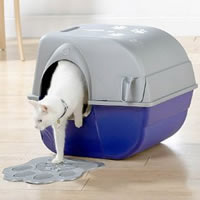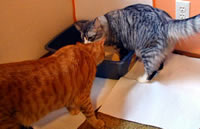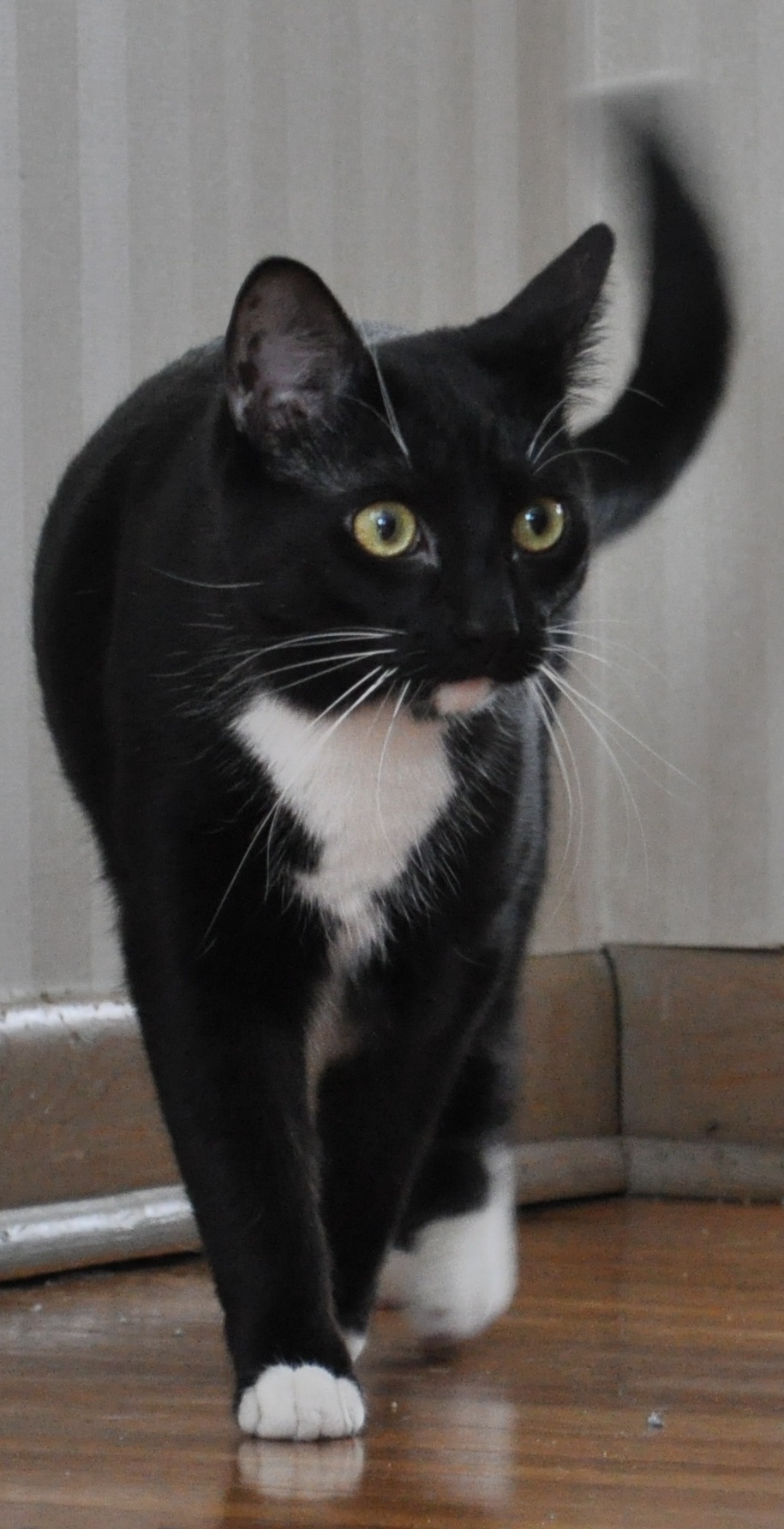Cats eliminate to fulfill a fundamental need. They also use eliminations as a way to mark their territory. Indoor cats consider your home their territory.
You can help ensure that your cat doesn't feel the need to use eliminations to announce that your home is her territory by providing an attractive litter box. The goal is to provide your cat with a positive experience when using the litter box. Positive experiences encourage the cat to continue using the litter boxes we supply.
Cats tend to avoid things that they associate with a negative experience. If your cat has a negative experience while using the litter box, for example the litter is dirty or something startles her, the cat most likely will avoid that box in the future.
There are four basic things to consider when setting up a litter box:
1. Litter Box Hygiene
2. Litter Box Type and Size
3. Litter Substrate
4. Litter Box location and number
Litter Box Hygiene
Cats are fastidiously clean. Most cats will avoid using a dirty litter box in favor of a cleaner place. That "cleaner place" may turn out to be your carpet, bed, or sofa. To prevent house-soiling the litter box must be scooped daily and washed weekly with mild dish detergent.
Litter Box Type and Size
Litter boxes are available in a variety of sizes and shapes. Cats generally prefer large, uncovered litter boxes. Uncovered boxes are more easily accessible to your cat. Larger boxes are better because they can provide more room for your cat to move around. As a rule the litter box should be large enough for your cat to stand up (on all fours) and turn around in.
Boxes with high sides or rims around the top may be appropriate for cats that tend to scatter litter over the side while digging. Low sided boxes are appropriate for small kittens and older cats that have trouble getting in and out of the litter box.
Covered litter boxes are also available. Owners may use covered boxes to keep their dog out of the cat litter or to keep litter "out of sight". Some cats may prefer covered litter boxes because of the added privacy they provide. Remember that covered litter boxes will concentrate odors more than uncovered boxes. Your cat may refuse to use a covered box if it is not kept very clean.
Litter Substrate
There are many different substrates or litters on the market. Research has shown that most cats prefer fine-grained, unscented litters. Scoopable litters usually have finer grains than typical clay litter and have the added advantage of being easy to keep clean on a daily basis. Many cats are put off by the odor of scented or deodorant litters. This is also a good reason not to place room deodorizers or air fresheners near the litter box. Odor should not be a problem if the litter box is kept clean. If you find the odor offensive, the cat will also find it offensive and may not want to eliminate there. Remember, litter boxes should be scooped at least once a day and washed once a week with mild dish detergent.
Once you find a litter that your cat likes, don't change types or brands or the cat may refuse to use the litter box. If you need to make a change the cat should be offered the new litter in a litter box placed next to the old box and litter. This allows the cat to decide if she wants to use the new litter. Fill boxes with enough litter to permit the cat to scratch and bury waste (usually about 2 inches deep).
Litter Box Location and Number
Cats need quiet and privacy when using their litter box. Litter boxes should be placed away from appliances or air ducts that could suddenly come on and startle the cat. They also should be placed so that humans and other animals can't "sneak up" on the cat.
The litter box must be easily accessible. Don't place the litter box in "tight-spots" such as under vanity sinks or low tables. Remember, the cat needs to be able to stand and move around comfortably in the litter box. Consider the path the cat will take to reach the litter box. Don't place it so that she has to climb over furniture or other animals to use it. For example, a litter box that is placed near the dog's bed or behind the couch may not get much use.
The Golden Rule is "one litter box per cat, plus one". Problems such as urine spraying can be prevented or reduced by providing multiple litter boxes. Each cat requires a place to eliminate and mark territory. In homes with more than one story, litter boxes must be available on each level of the home. Cats don't like to walk far to get to the nearest litter box. If there are litter boxes on each level of the home, there is less likely to be a problem with laziness.
If you have addressed all four of the above issues and your cat is still not using the litter box, she could have a disease problem or feel threatened by something in her environment. You can read more about the causes of litter box problems in our Problem Solving section.

